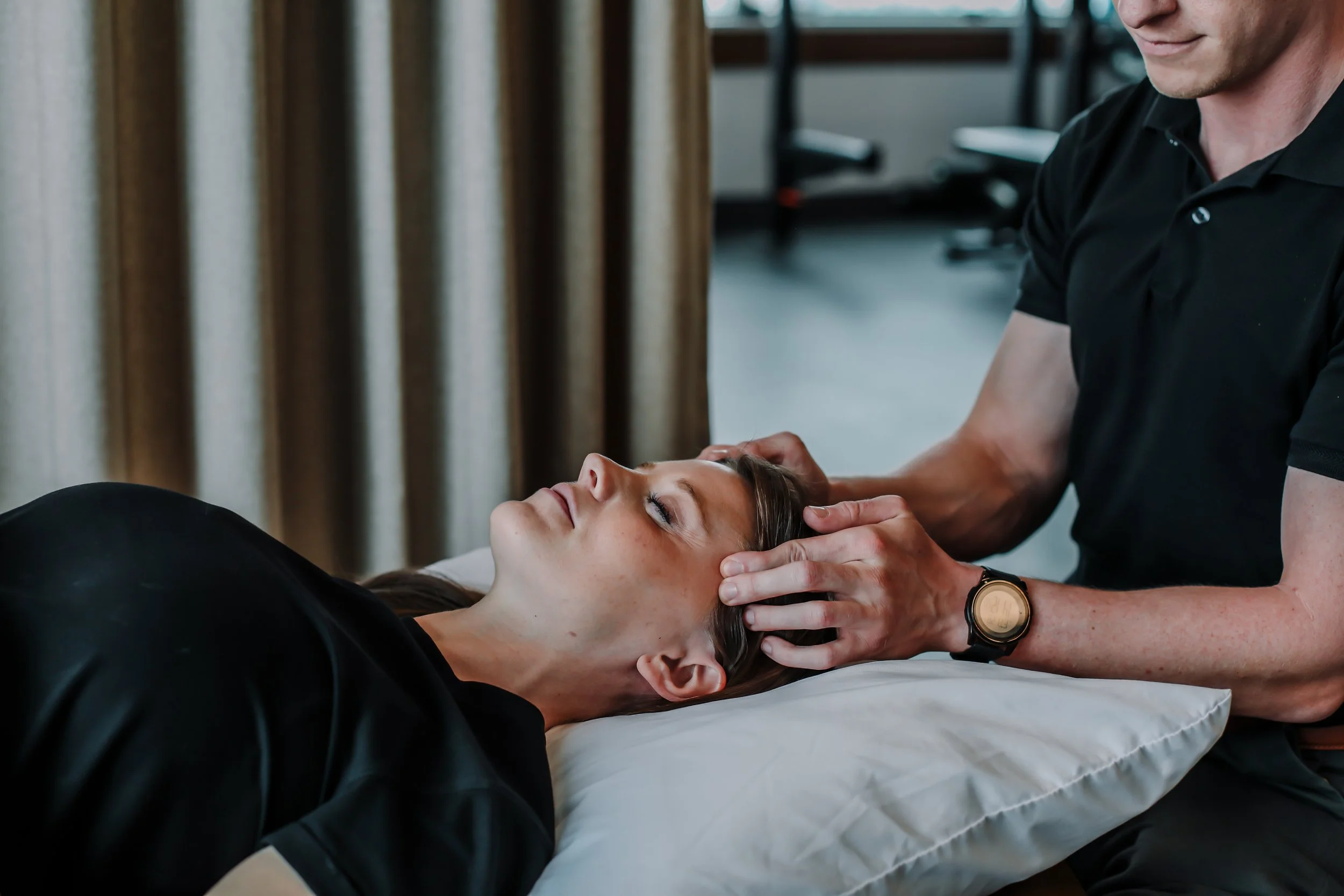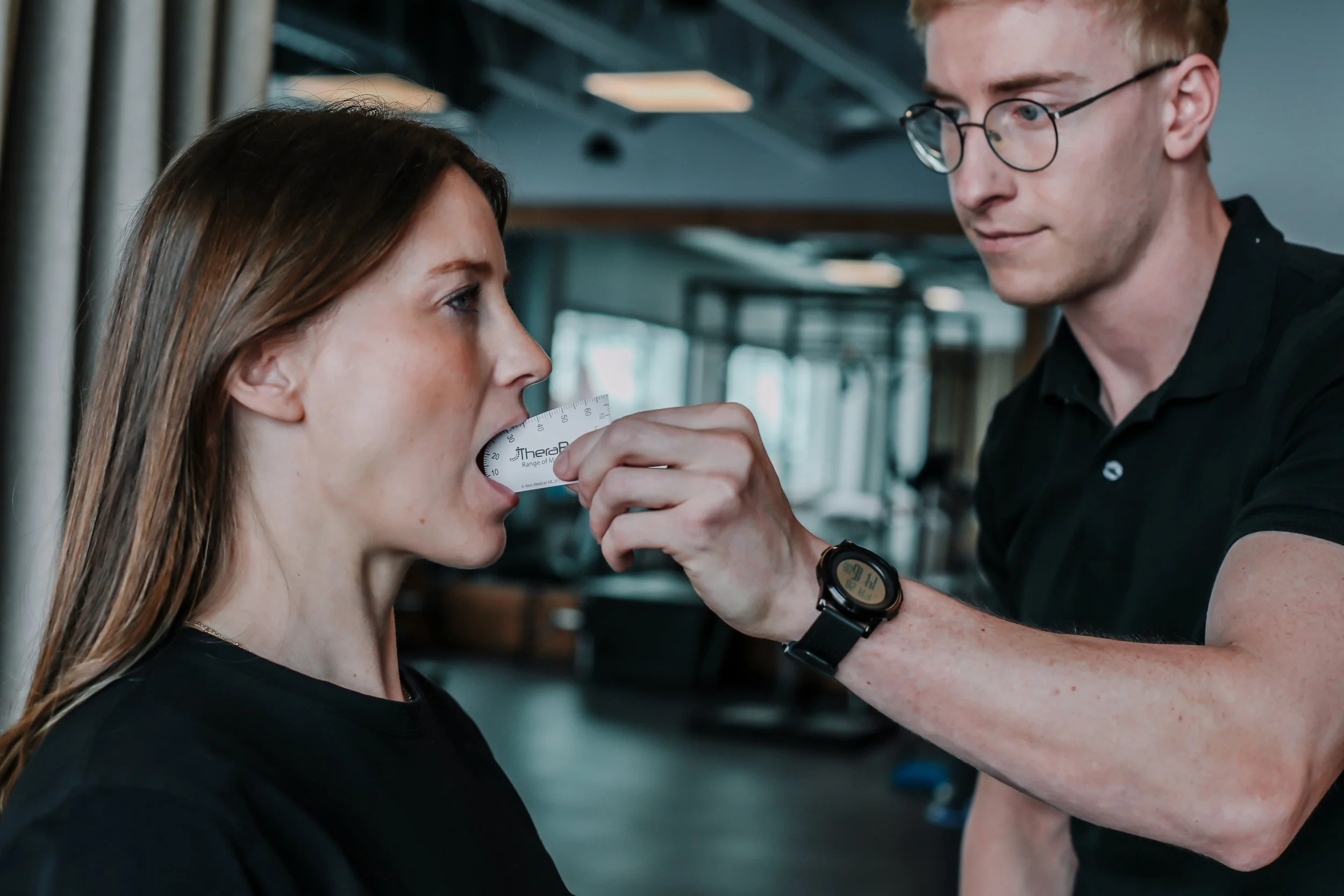
Temporomandibular Joint Disorder (TMJD)
Temporomandibular Joint (TMJ) Disorders
Physiotherapy for TMJ pain (also known as TMD), aims to alleviate pain, restore optimal jaw function, and address underlying complications through specialized exercises, manual therapy/dry needling, and postural correction. Our tailored treatment plans are designed to reduce muscle tension, improve joint mobility, and support long-term recovery. Education and individualized home treatment plans will also be given. Schedule a consultation to begin your path toward improved TMJ health.
What Do We Treat?
Pain with chewing, talking, clenching
Facial discomfort, headaches and neck tension
Trouble sleeping
Difficulty opening or closing the mouth
Clicking, popping or grinding of the jaw
Tinnitus or ringing in the ears
What to Expect During an Assessment
During a TMD assessment, a comprehensive history will be taken as well as a thorough objective examination of the TMJ and surrounding area. This will include range of motion, strength/ligament testing, palpation of the joint and muscles, functional and special tests, neurological assessments and more
Evaluation and Collaborative Care:
Providing progress reports to your dentist/doctor
Referring to orofacial specialists
Reviewing your medical history
Obtaining past x-rays or other imaging to assist in treatment planning
Do You Have Any Questions?
Email us at theteam@bloomtherapy.ca and we can answer any questions you might have!
+ What Causes TMJ Pain/TMD?
Several potential causes of TMJ/TMD include poor posture and neck or back tension, bruxism (teeth grinding or clenching), jaw misalignment or trauma, arthritis or degenerative joint disease, and stress, which can increase jaw tension.
+ How Can Physiotherapy Help?
Physiotherapy is one of the most effective and conservative treatment options for TMJ/TMD, as a qualified physiotherapist can assess your jaw, neck, and posture and develop a personalized treatment plan that may include manual therapy to relieve muscle tension and improve alignment, therapeutic exercises to strengthen muscles and enhance joint mobility, postural correction to reduce TMJ stress, and pain management techniques such as dry needling, relaxation strategies, and stress-reduction education.

